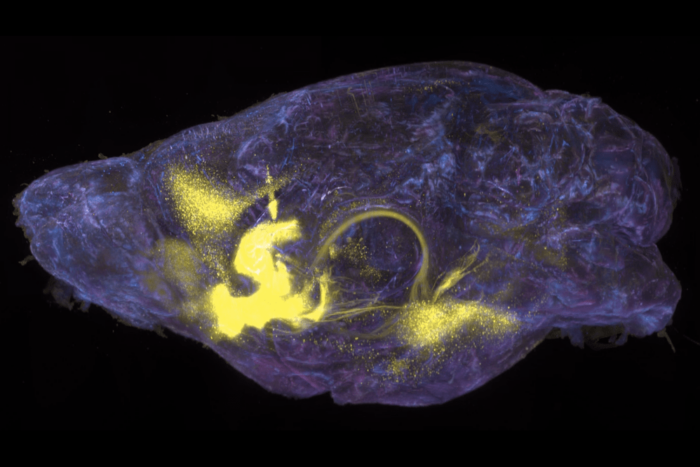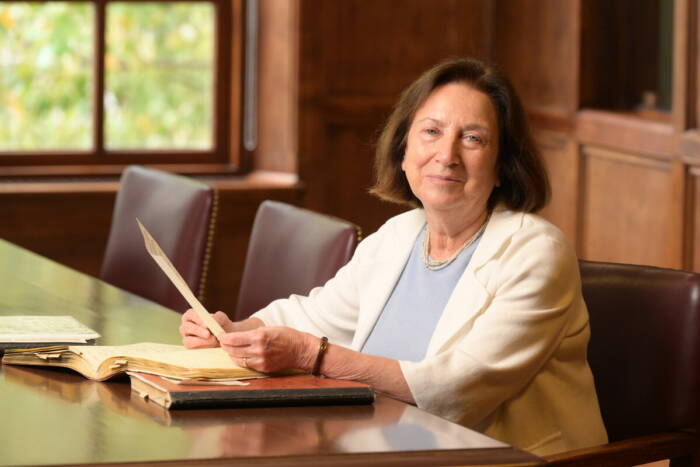Board approves nine-year strategic plan
Following nearly a year of development, the university’s strategic plan titled “Transforming Biomedicine” has been approved by the Board of Trustees. The plan, which will guide the university’s activities over a nine-year period ending in 2020, was authored by a 13-member strategic planning committee that has met weekly since September. Themes developed by the committee were previewed before several audiences, including the Board, Academic Council, inBenchMarks and at a town hall meeting for the university community held in May, and the plan itself was fully reviewed by the faculty and by the Board this month. As legal trustees of the university, the Board has the final say over its operations.
“We set out to develop a new strategy for the university at a time when the objectives of the previous strategic plan, the Campaign for Collaborative Science, were nearing completion,” says Marc Tessier-Lavigne, the university president and chair of its strategic planning committee. “Today I am pleased to report that the work of creating the new strategy is complete and it has been ratified by our Board.”
“The new plan addresses several challenges that the university will face in the coming years, including the likelihood of ongoing economic instability, competition for top scientific talent and the need to provide access to expensive yet critical technology. It sets a course that will allow us to seize new opportunities in order to remain as successful in coming decades as we have been in the past.”
“Over the past decades we have seen scientific advances that the founders of this institution could not imagine,” says Russell L. Carson, chairman of the Board of Trustees. “With this plan, which emphasizes both a renewed commitment to fundamental science and bridging that science with research on disease, the stage has been set for the university to push the boundaries of human knowledge even further. I am confident that as we enter the next era of biomedical discovery, Rockefeller will continue to play a prominent leadership role in advancing science, and in the development of new tools, new medicines and new strategies for fighting disease.”
The plan’s theme, transforming biomedicine, signifies a commitment to basic research as the surest way to make transformative advances in medicine while also acknowledging that biomedicine has reached a point where the discoveries of fundamental science can be applied broadly and systematically to accelerate the understanding of human biology and disease.
The plan has six components:
1. Faculty recruitment. The strategic plan reaffirms the importance of the open search mechanism to recruit junior faculty. The open search, which has already been in use for six years, allows the university to pursue the best and brightest scientists regardless of their field of study. The plan calls for the continuation of the open search, to be augmented by a more active search component that will take advantage of existing faculty relationships in order to reach out to talented candidates that might not otherwise submit applications to Rockefeller.
It also calls for increased hiring of mid-career scientists, who have already achieved a track record of success at other institutions and who are still in the ascent of their careers. Overall, the plan calls for the addition of 12 tenure-track and six mid-career scientists over a nine-year term, a pace of hiring that Dr. Tessier-Lavigne says will compensate for retirements and departures and maintain the university’s current size of approximately 70 to 75 labs.
2. Education. As expected, the plan reaffirms the importance of providing financial support to graduate students and postdoctoral researchers, a practice that allows the university to compete for top students. The strategy calls for working to increase Rockefeller’s visibility to potential applicants and improving mechanisms for identifying talent overseas.
3. Basic research program development. Generous direct support to individual faculty has been a key component of the university’s success over the years, making it possible for scientists to embark on projects for which grant funding might be difficult to secure. The plan calls for the continuation of this practice, which is not widely used elsewhere and is therefore an important recruiting and enabling tool.
The plan also calls for the creation of new interdisciplinary research centers, where opportunities exist. The centers, which seek to increase interactions and collaboration among labs that are working in similar areas, may also invest in shared technologies and infrastructure and help individual labs better take advantage of economies of scale. Eight research centers currently exist, including the new Center for Basic and Translational Research on Diseases of the Digestive System; a ninth, to be called the Center for Genomic Medicine, is in development.
4. Medical sciences and biotechnology. Members of the strategic planning committee reaffirmed the university’s commitment to one of its unique institutions: its clinical research hospital that has since its founding served as a model for the investigation of human disease. Under its current leadership, the hospital has successfully lowered barriers to conducting human subjects research, and as a result a record number of laboratories — almost half — have protocols using human subjects. The plan calls for a continued commitment to the hospital and its programs, including necessary renovations. It also calls for enhancements to hospital infrastructure to support future translational work, to be pursued in collaboration with Weill Cornell Medical Center and Memorial Sloan-Kettering Cancer Center.
5. Environment for discovery. “Providing our scientists with access to the tools and technology they need to make discoveries is absolutely vital to the university’s mission,” says Dr. Tessier-Lavigne. The planning committee has identified two areas where there are immediate needs for investment: in DNA sequencing and in bioinformatics. The plan calls for access to DNA sequencing via the New York Genome Center and complementary upgrades to bioinformatics capabilities on campus to facilitate the analysis of genomic data. Additional investments may be required as new technologies become available and as faculty needs change.
Just as important is the ongoing need for modern, well equipped lab space that can support the requirements of today’s collaborative, technology-intensive research environments. An analysis of the university’s space, accounting for new recruitment as well as attrition, projects a need for approximately 66,000 square feet of ready-to-use lab space over the nine-year term of the plan — about twice what the university has available. “What this means is that although we do not currently have a shortage of space, we expect to face one in about four to five years,” says Dr. Tessier-Lavigne. “At that point we will have two options: we can build or we can renovate.”
The strategic planning committee, as well as the master planning committee that has been charged with evaluating the university’s infrastructure needs, favors a plan developed by Rafael Viñoly Architects to expand the campus eastward by creating a two-story laboratory building on a long platform over the FDR Drive. This plan, which would in effect increase the size of the campus by two acres and would feature a landscaped roof level with and linked to the current grounds, would contain as much as 160,000 square feet of space as well as additional facilities such as a new café and administrative offices. This “river building” would preserve existing views and leave the remainder of the campus available for future development if needed. (More details about the proposed building will be discussed in a future BenchMarks.)
An alternative to new construction would be renovations to multiple floors in the Weiss Building, built in the early 1970s. Although this option, which is less expensive than building from scratch, would buy time, it would not address the university’s long-term need for space.
“While the Rafael Viñoly plan would be a phenomenal addition to the campus, much work needs to be done over the next several months to evaluate its feasibility and fundability,” says Dr. Tessier-Lavigne. “We plan to pursue city approval for this project and further refine the cost estimates for the river building, and both the Academic Council and the Board will continue to study our options with the goal of making a decision on how to proceed in the next year.”
In addition, improvements will need to be made to several other buildings over the coming years, including the Graduate Student Residence and Sophie Fricke Hall, and a permanent location will need to be found for the Information Technology department, which is currently located in a temporary building.
6. Beyond our walls. Although New York City receives more NIH grant money than all but one other city — Boston — it is not traditionally seen as a biomedical powerhouse. The planning committee, however, believes New York is on the cusp of realizing its potential, and that Rockefeller can play a leadership role in helping make this happen. “By joining with other institutions in the city, as well as with the region’s growing biotechnology and pharmaceutical industries, we can help foster productive collaborations in the academic sector and also accelerate the movement of discoveries to the commercial sector,” says Dr. Tessier-Lavigne.
In addition to these six main components, there are two additional ongoing areas of focus that the committee felt should be pursued vigorously: the preservation of the university’s culture and the enhancement of its visibility locally, nationally and internationally. This is to be accomplished by continuing to invest in outreach and communications programs that engage with the community and the public at large.
“The plan we have now adopted is an ambitious one and there is much work to be done to implement all that has been proposed,” says Dr. Tessier-Lavigne. “But this is an institution that has sustained its excellence and remained at the leading edge of scientific discovery for more than a century. Members of our community at all levels have thought carefully about the concepts presented in this plan, and I’m confident that this strategy is the right one for the university as we position Rockefeller for success in the next decade and beyond.”


